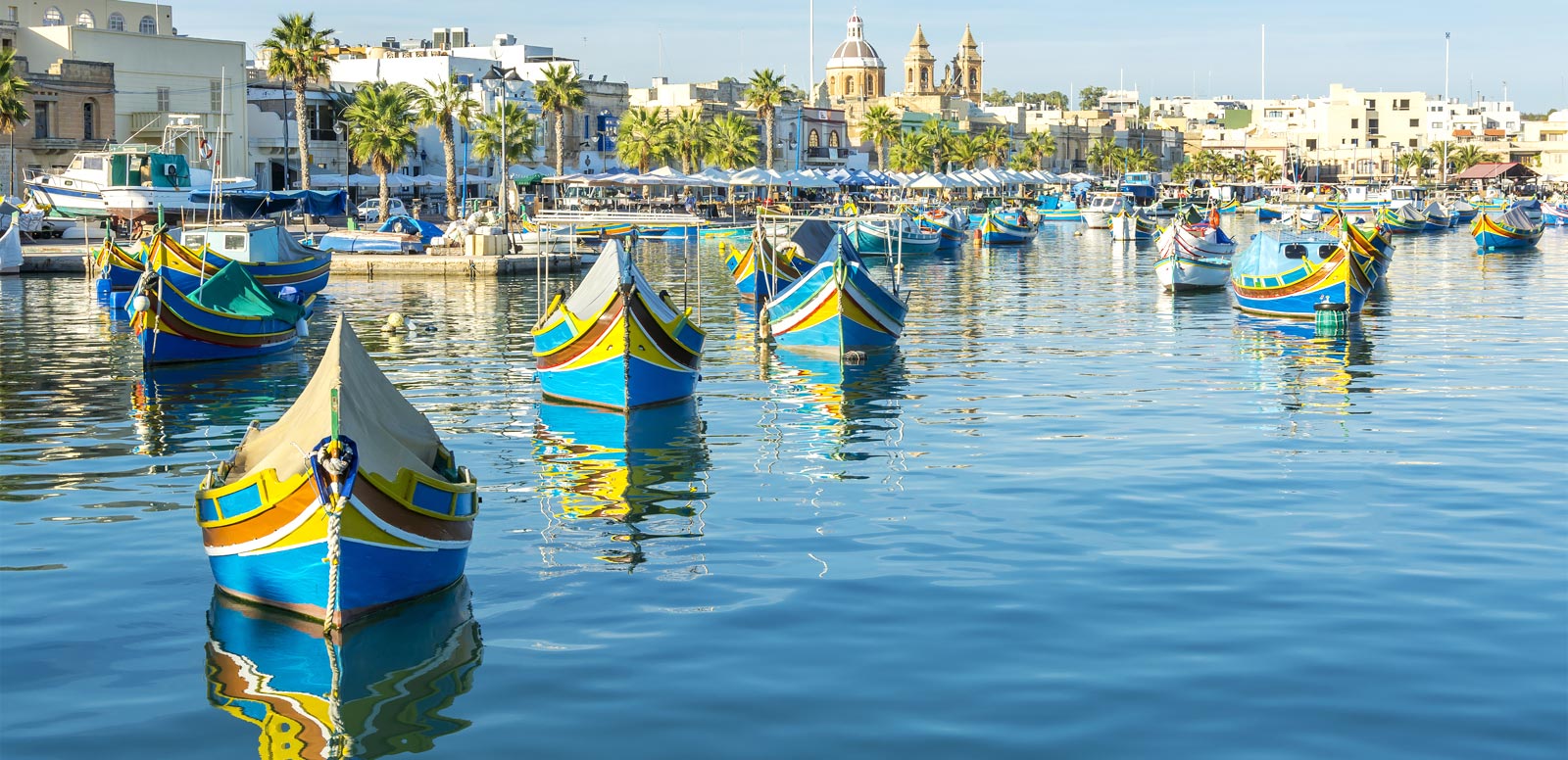Things to know before visit Malta
Malta has a subtropical climatic zone with hot and long summers and mild winters. Summers are between May and October and are usually dry with temperatures ranging around 22 degrees Celsius. Winters are cool and start from December to February with an average temperature of 9 degrees Celsius.
This fortified capital city of Malta, Valletta is an important seaport. It has a regal appeal to it. In 1530, the Knights of Malta got the island from the King of Spain and they created a capital that had an aristocratic air and that can be seen in its proper 16th-century urban planning and grand structures. Some of the must-see places include; Saint John's Co-Cathedral known for its opulent interiors; Grand Master's Palace with beautiful paintings talking about the victories of the military and the the Upper Barracca Gardens with its gorgeous Romanesque arches and panoramic views of the city.
A beautiful place and the most idyllic location in the Maltese islands, it has a quaint landscape. The pristine beaches, quiet town and cultural treasures make it a great place to unwind and relax. The island of Gozo has a fortified medieval city called Victoria along with Ggantija Temples, an important archaeological site that date back to 3500 BC, worth visiting. Another stunning and unique site at the island is the Azure Window, a striking coastal formation.You could spend some time admiring the grand Baroque churches or simply relaxing at one of the tourist favourite beach- Ramla Bay.
A fairy-tale city with a medieval air- Mdina, is a captivating hilltop town that is steeped in history. The entrance to the city is also grand- with a huge Main Gate. Once you enter the city you feel you are in a palace with ancient ramparts, old sandstone buildings and stunning churches. A must-visit here is the Cathedral of Saint Paul, a magnificent Baroque styled monument with gorgeous interiors done by renowned Maltese painter. Also, visit the Palazzo Santa Sofia, one of the best preserved medieval monument’s in Mdina and the Palazzo Vilhena that has the Natural History Museum with a stunning collection of geological exhibits.
Rabat island lies just outside Mdina ramparts and is renowned for its historical attractions. One of the hidden gems include the Casa Bernard, a brilliant 16th-century palazzo that was once the house of the noble Maltese family. History enthusiasts should visit the Roman Villa, an archaeological site with stunning 1st-century BC Roman mosaics. Another attraction is the Parish Church of Saint Paul, a beautiful 17th century Baroque styled church where Saint Paul had stayed for some time in the 60 AD.
This archaeological town has a pre-historic relevance to it of about 4000-2500 BC. It is a Neolithic cult site that has been given the UNESCO-listed archaeological site status. It was found in 1902. it is a complex of catacombs that were made out of rock with stone tools.There are inter connected passages and staircases inside at three levels. It is believed that prehistoric man used to perform religious burial rituals here. At the innermost layer lies the "Holy of Holies” with beautiful paintings and carvings in red ochre. Visitors come here to experience the ancient cultural traditions that are non-existent today.
Travel Advisory:For the latest information and advice on safety and entry requirements please consult your travel agent well in advance of your departure and visit the following government website:
Department of Foreign affairs and trade www.dfat.gov.au
Smart Traveler website www.smartraveler.gov.au
Electricity:While traveling to Malta it is advisable to carry an international power plug adapter with multiple plug configurations. The standard voltage is at 230V and the frequency is 50 Hz.

